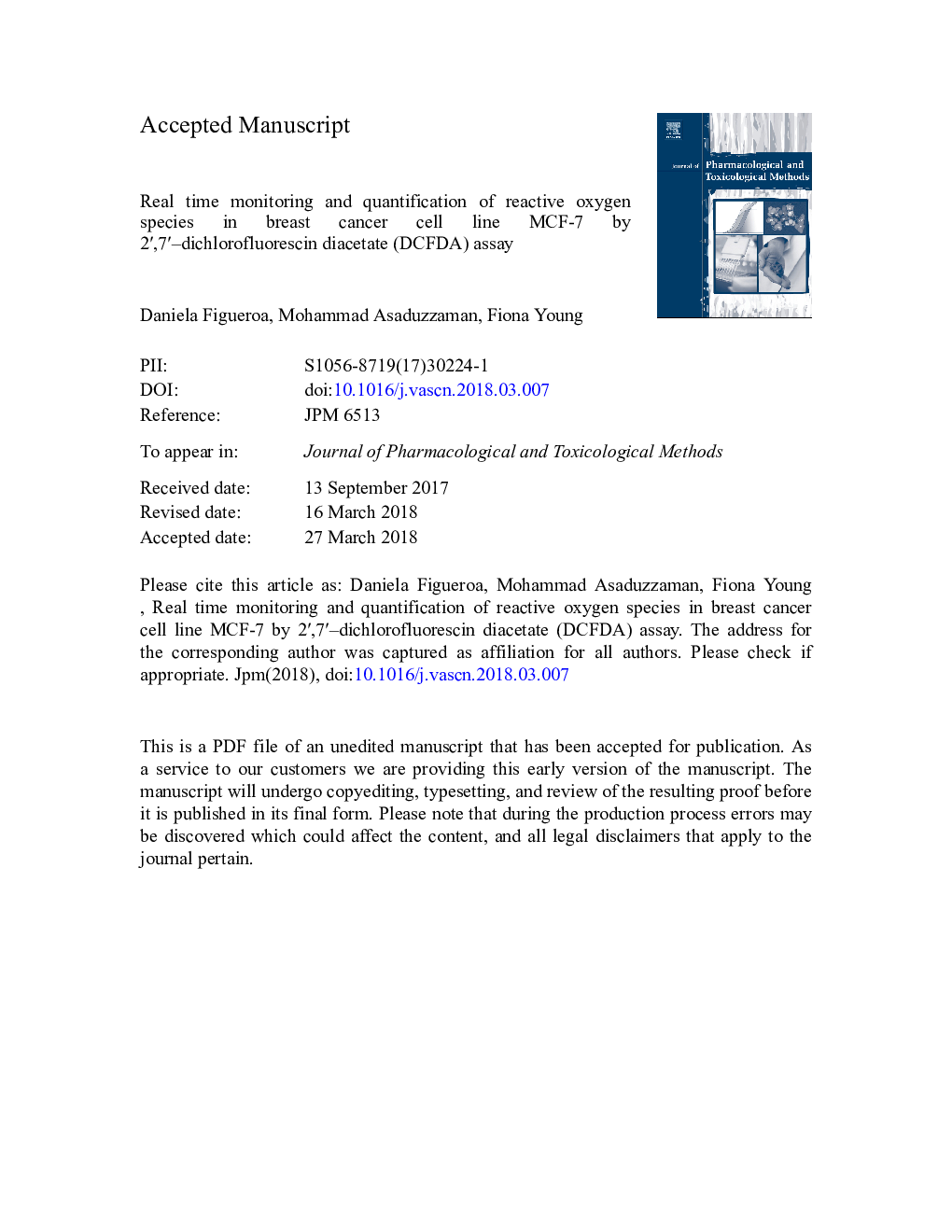| Article ID | Journal | Published Year | Pages | File Type |
|---|---|---|---|---|
| 8533712 | Journal of Pharmacological and Toxicological Methods | 2018 | 25 Pages |
Abstract
The detection of reactive oxygen species (ROS) using 2â²,7â²-dichlorofluorescin diacetate (DCFDA) is commonly performed by a single measurement of fluorescence but this fails to capture a profile of ROS generation over time. This study aimed to develop a real-time monitoring method to increase the utility of the assay, to incorporate cytotoxicity screening and to describe the combined effects of DCFDA and the ROS generator, Ter-butyl hydrogen peroxide (TBHP). Breast cancer MCF-7 cells were loaded with DCFDA (0-50â¯Î¼M) for 45â¯min, and then exposed to TBHP (0-50â¯Î¼M). Fluorescence was recorded according to three different schedules: every hour for 6â¯h, or once after 6â¯h or 24â¯h. Viability was assessed in a crystal violet assay and cell morphology was examined by microscopy. TBHP caused a time and dose-dependent increase in ROS and the magnitude of the fluorescent signal was affected by the loading concentration of DCFDA. Reading the fluorescence every hour for 6â¯h did not diminish the emission signal. The most sensitive and reliable combination for this ROS assay was 10â¯Î¼M DCFDA with 25â¯Î¼M TBHP; since higher concentrations of DCFDA compromised cell viability. In conclusion we adapted a single point ROS assay to enable production of a profile of ROS generation over an extended 6â¯h period, and related this to cell viability and morphology.
Related Topics
Health Sciences
Pharmacology, Toxicology and Pharmaceutical Science
Pharmacology
Authors
Daniela Figueroa, Mohammad Asaduzzaman, Fiona Young,
